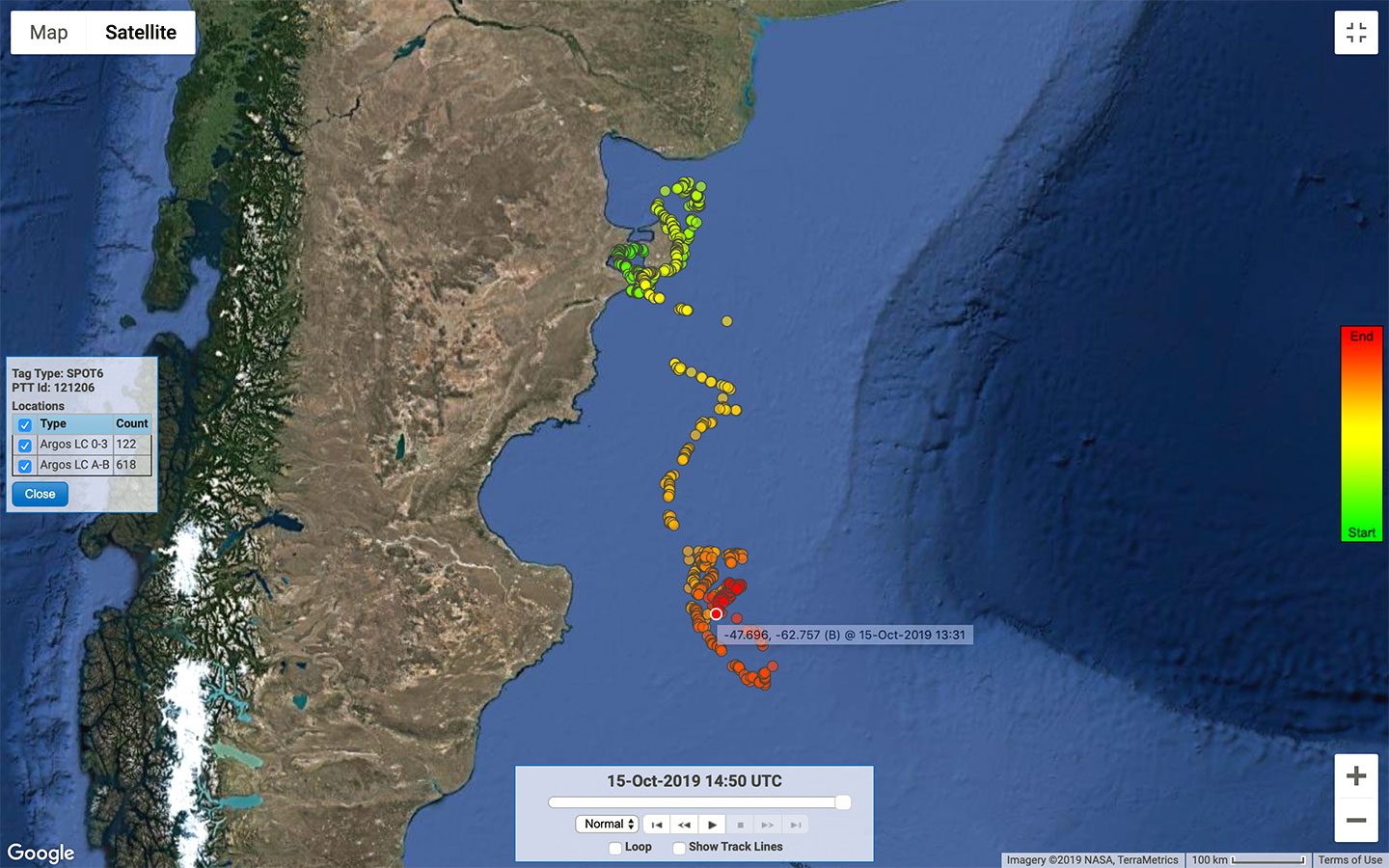Photo: R. Soley
El Gris’s 115 day tracking route (12,739 km)
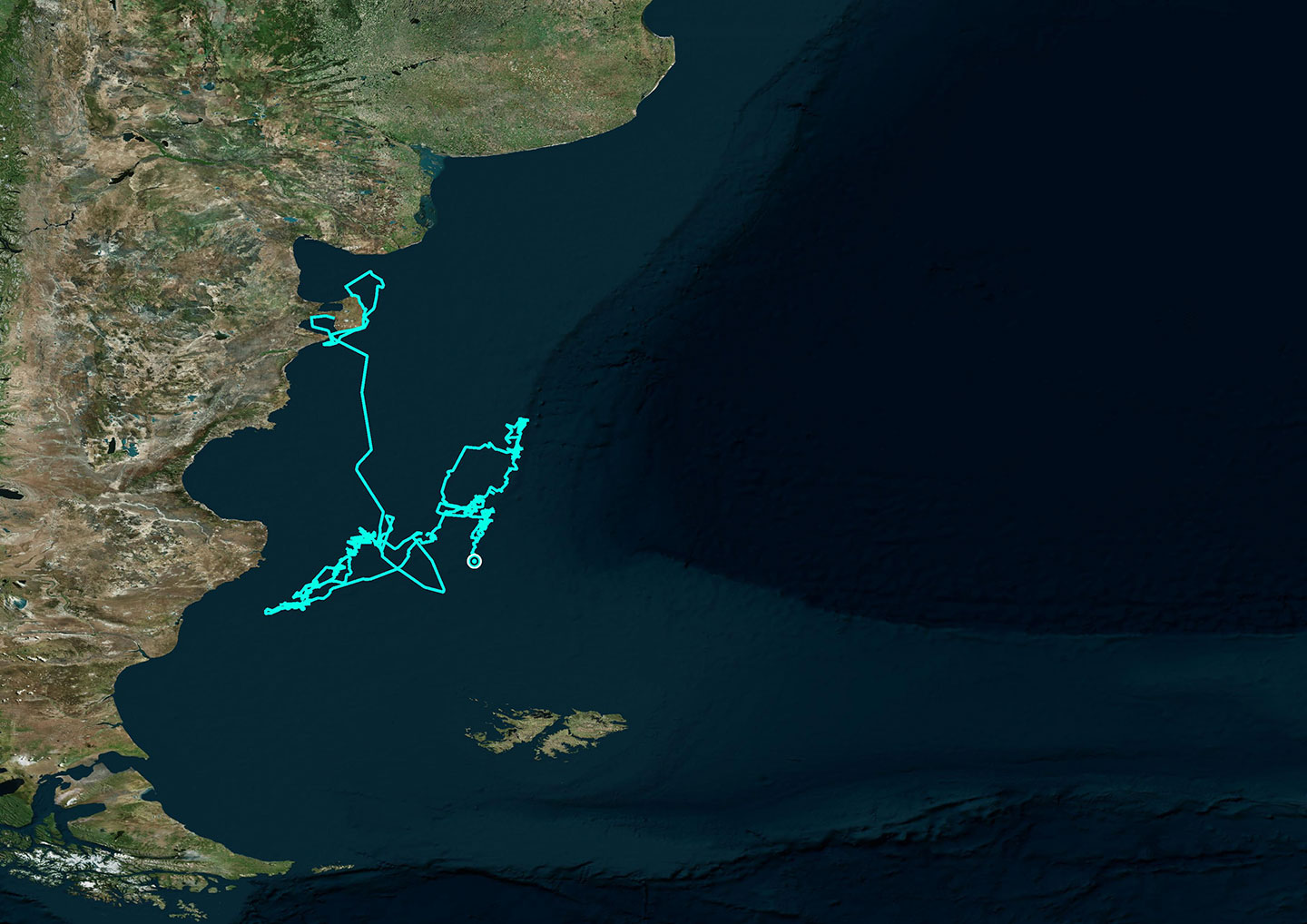
January 05 – January 08, 2020
After letting us watch his travels for 115 days, El Gris’s transmitter stopped functioning on January 8. His last position was 90 kilometers south of where he was last week on the edge of the continental slope, an area with abundant food. We hope that his unique grayish color will help us spot him during the next breeding season in the waters of Peninsula Valdés.
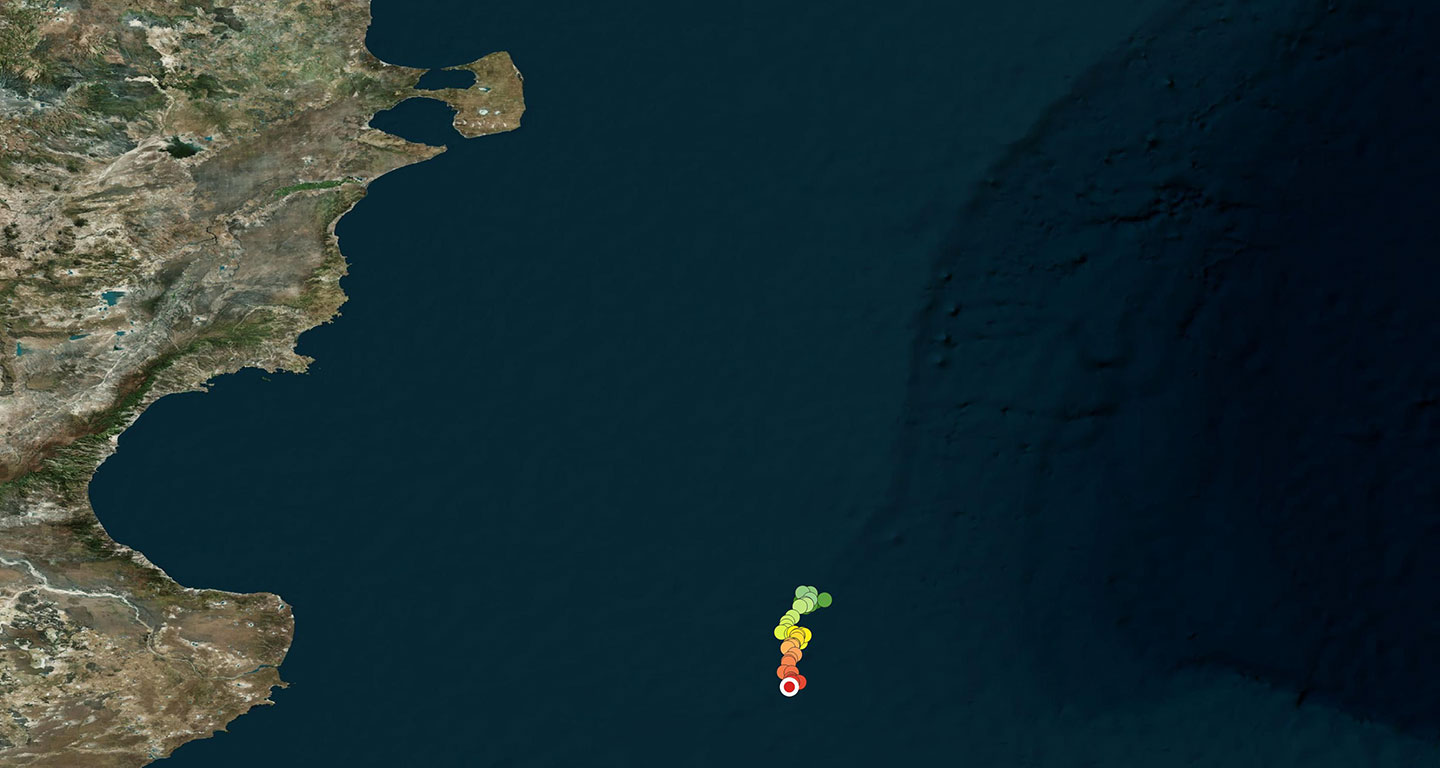
December 29, 2019 – January 05, 2020
El Gris remained on the continental shelf swimming in a southwards direction along a letter “C” shaped route (almost copying the shape of the Golfo San Jorge to the west). The last day of 2019 this male stopped to feed in an area that extends 5000 square kilometers.
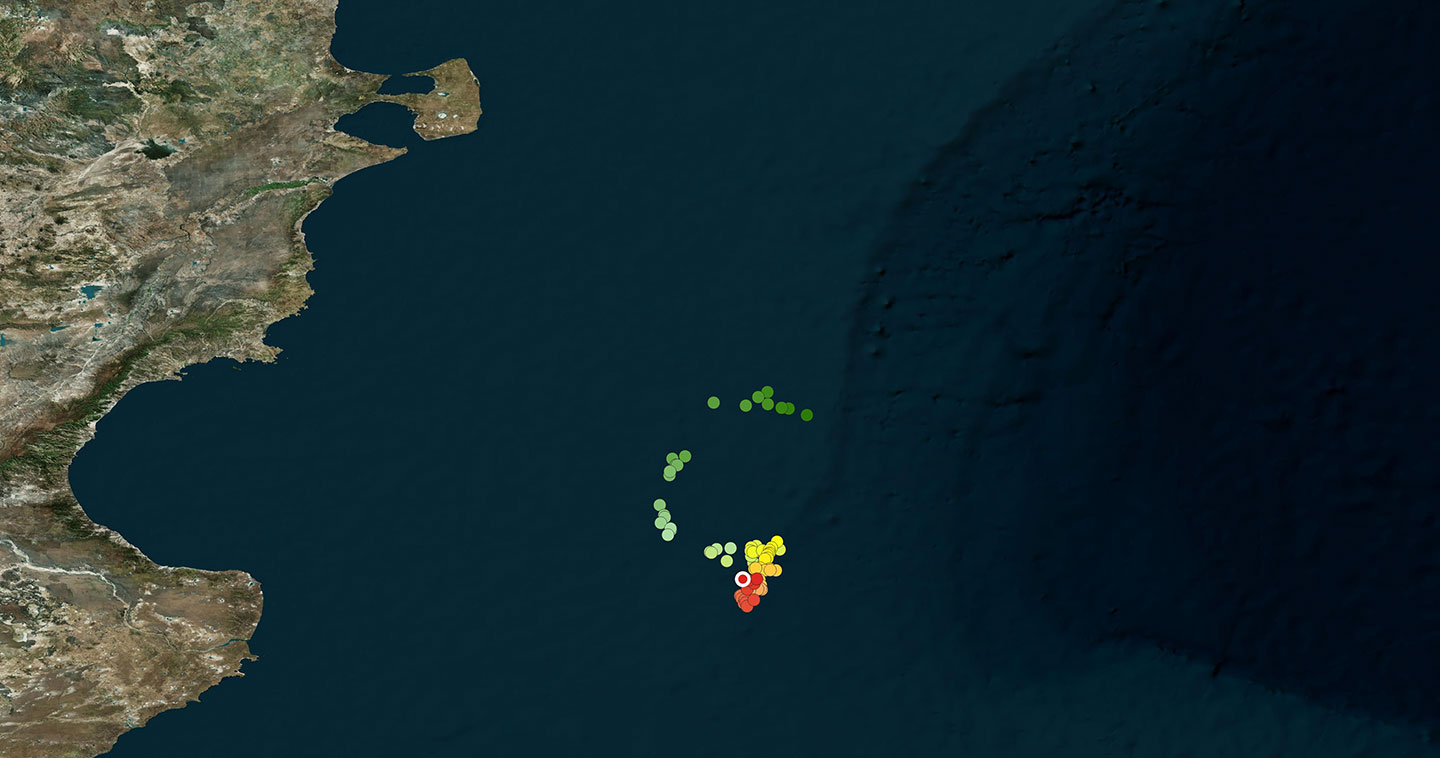
December 22 – December 28, 2019
The edge of the continental slope continues to interest this male, and after traveling northwards for a few kilometers he has now returned to almost the exact same spot he was in a week ago.
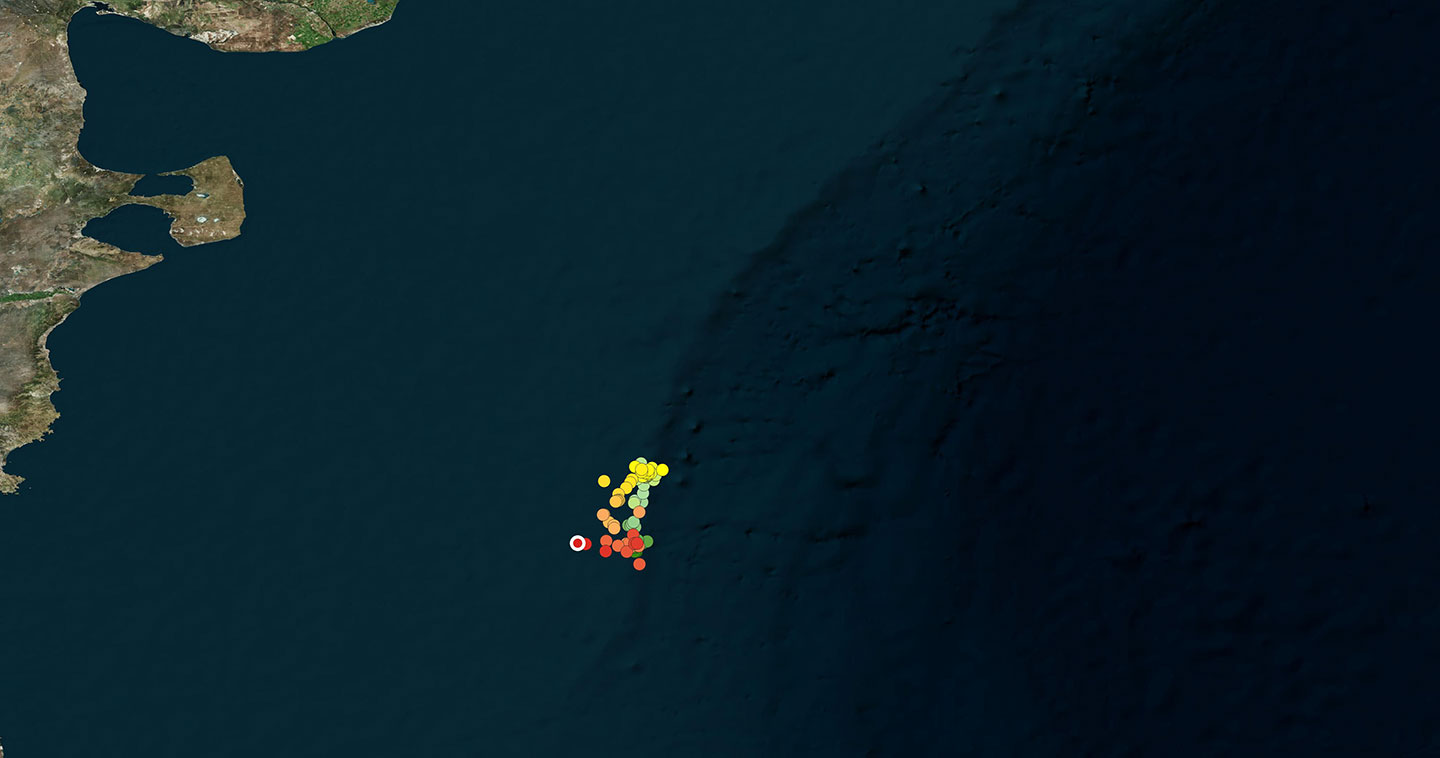
December 16 – December 21, 2019
This adult male continued traveling in a northeastern direction until he reached the edge of the continental shelf. He, together with Fiesta and “69”, share the highly productive area with hundreds of fishing boats.
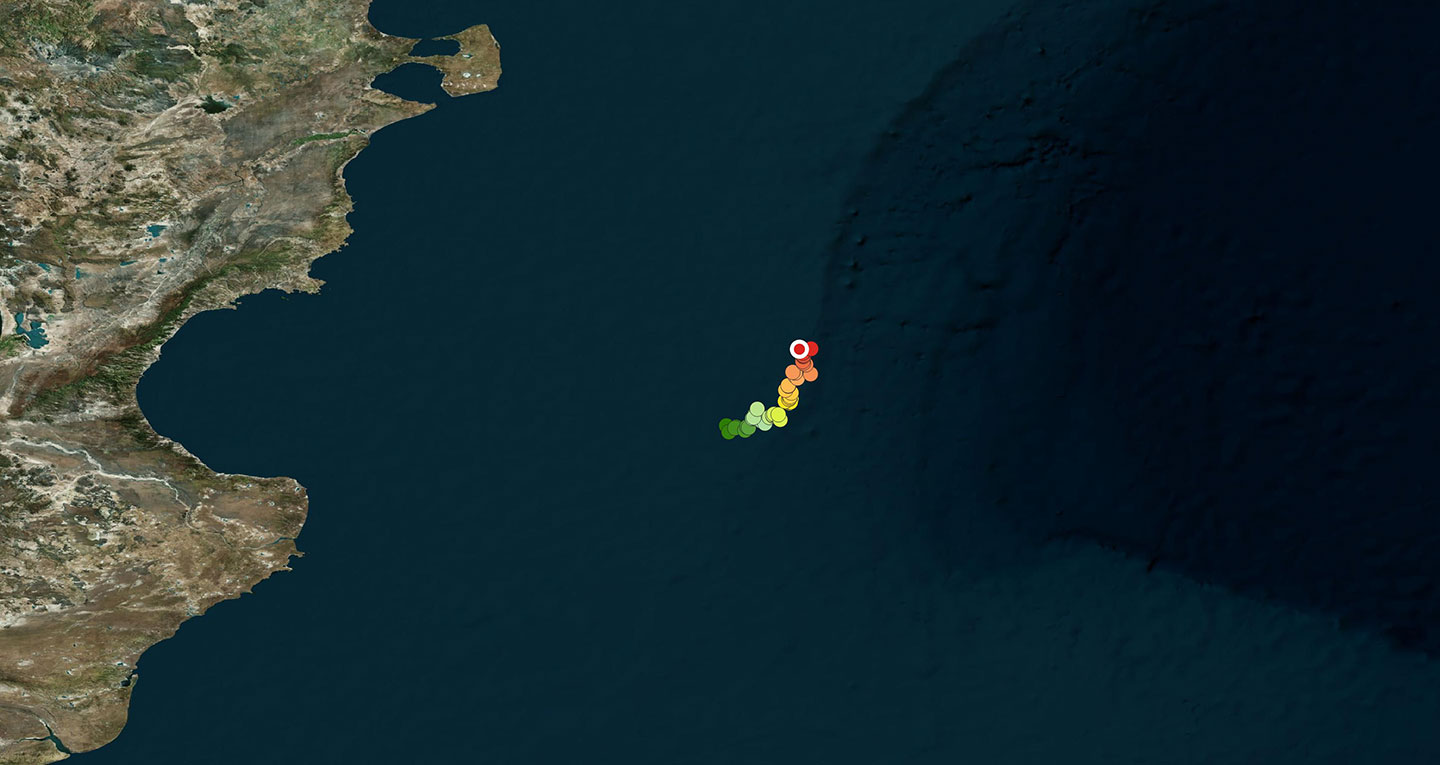
December 05 – December 15, 2019
El Gris has moved very little over the past 10 days, and continues exploring a very small patch of 10,000 square kilometers close to the Blue Hole, which is a very small area considering a whale’s oceanic realm.

November 26 – December 04, 2019
After spending the first 4 days of the week in one area it seems that El Gris decided to look for another marine area in which to feed. He began swimming towards the northeast, approaching the continental slope in front of Golfo San Jorge.

November 17 – November 25, 2019
This gray male, as his name indicates, traveled to the southeast of his previous location. At this time he is about 22 kilometers from the other whales, “69” and Fiesta, in this particular area of the continental shelf.

November 10 – November 16, 2019
El Gris swam northwards a bit more than his neighbors Fiesta and “69”, and then returned to where he was a week earlier.
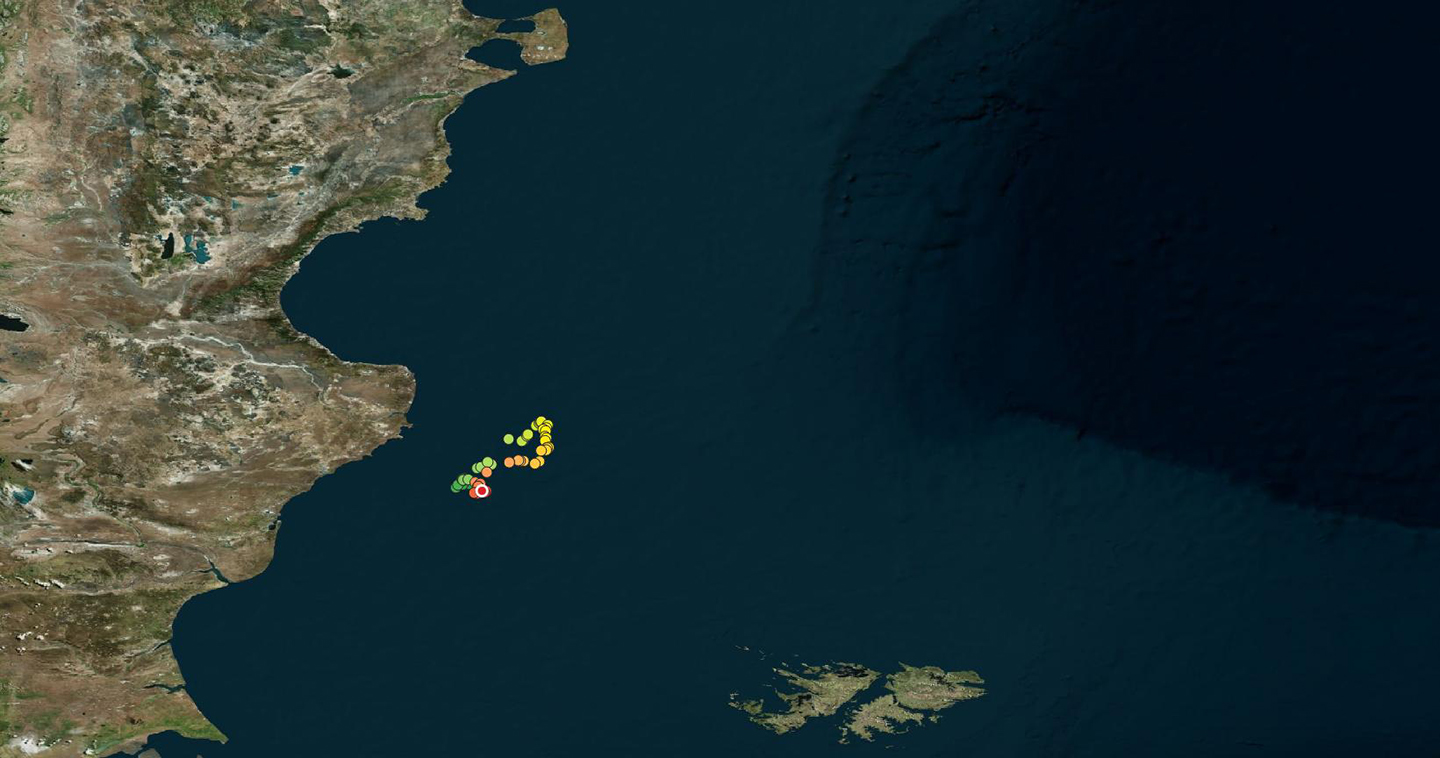
November 2 – November 9, 2019
This week El Gris traveled slowly towards the south east in an area close to Puerto Deseado, the same area where 69, Fiesta and Metido are at present.

October 27 – November 1, 2019
This adult male continues in the same location, 150 kilometers to the east of Puerto Deseado in the open ocean. Metido, Fiesta and 69 with their transmitters affixed also remain in the same area.
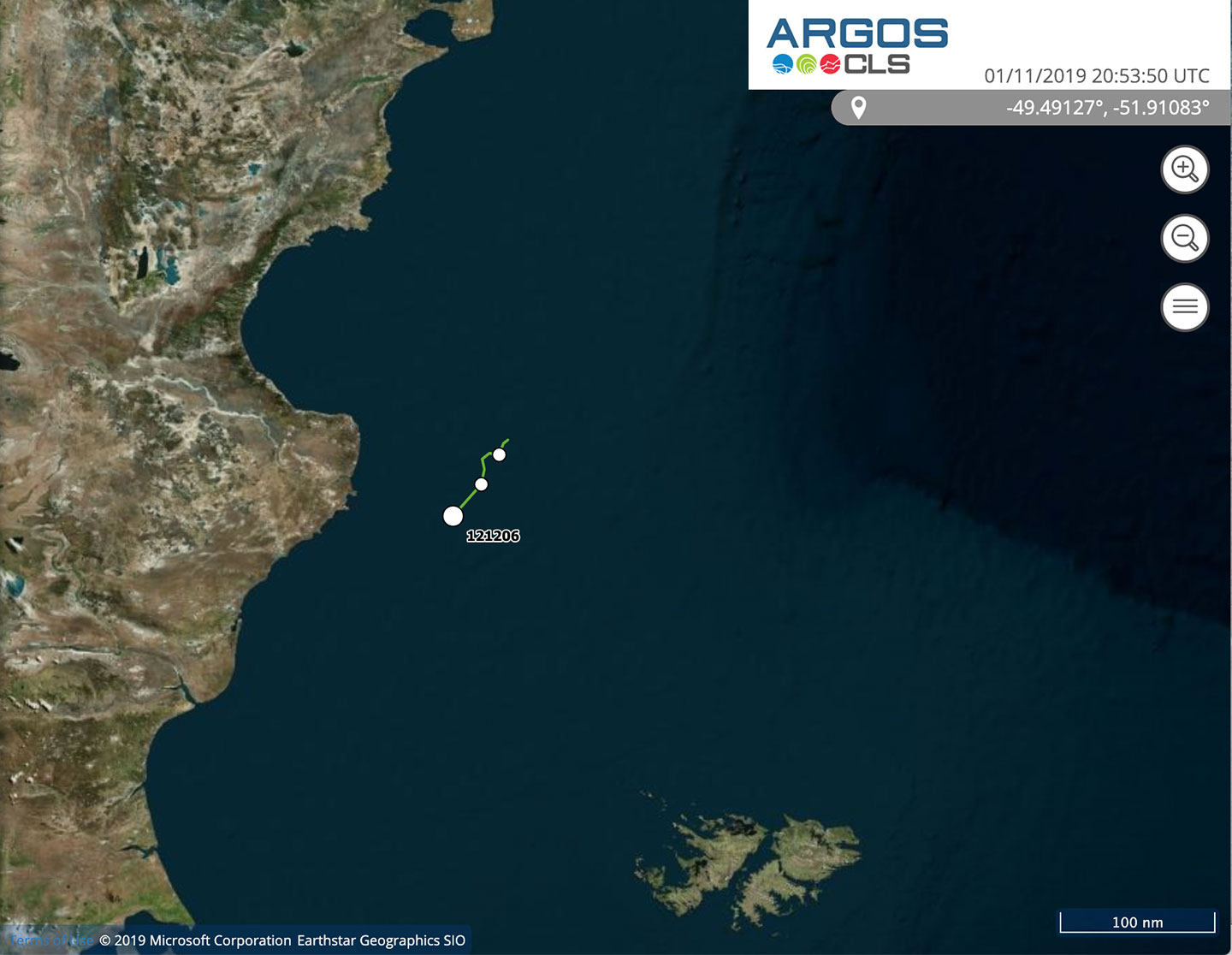
October 16 – October 26, 2019
At this time El Gris is exploring a small area 150 kilometers to the east of Puerto Deseado, where he is most likely feeding. Three other whales with transmitters (Metido, Fiesta and 69) have come into this area in the last few days.
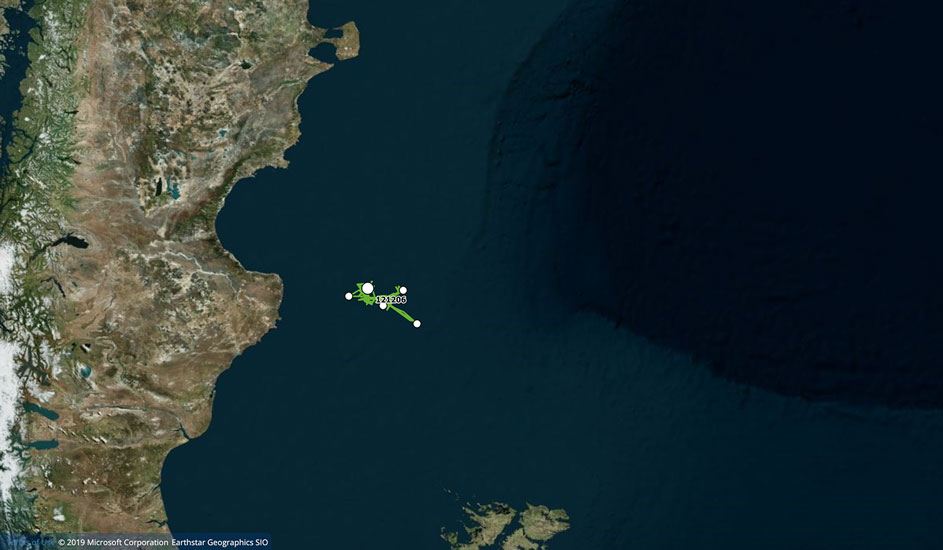
September 14 – October 15, 2019
This adult male left Golfo Nuevo a few days after having a satellite transmitter attached. He first swam north, parallel to the coast of the Valdes Peninsula, up to Golfo San Matías, then turned around and swam rapidly southwards. He has lately remained for more than a week at the latitude of Puerto Deseado, 150 kilometers from the coast.
